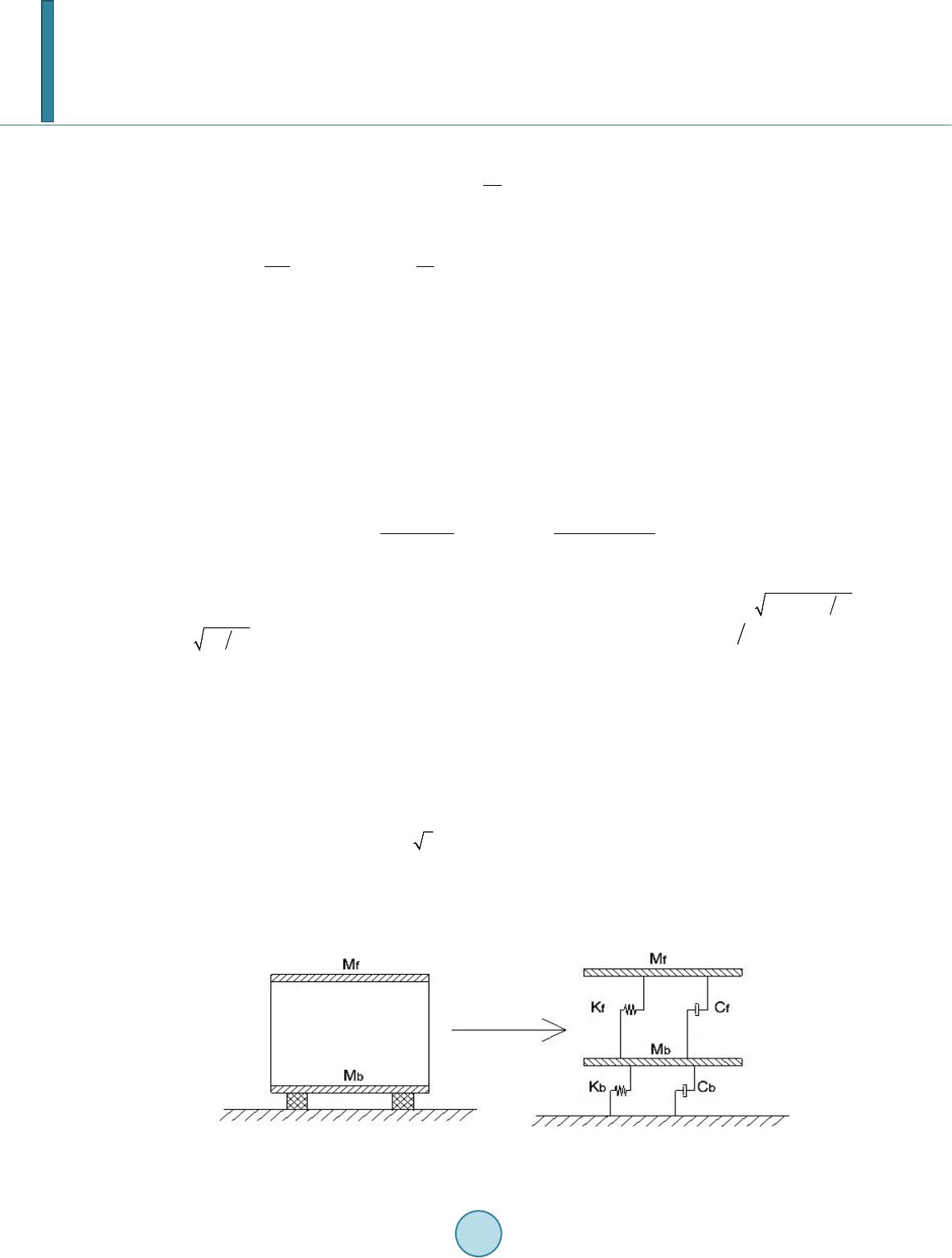 Journal of Applied Mathematics and Physics, 2014, 2, 163-169 Published Online April 2014 in SciRes. http://www.scirp.org/journal/jamp http://dx.doi.org/10.4236/jamp.2014.25020 How to cite this paper: Ding, W.S. and Sun, Z. (2014) Wavelet-Based Response Computation for Base-Isolated Structure under Seismic Excitation. Journal of Applied Mathematics and Physics, 2, 163-169. http://dx.doi.org/10.4236/jamp.2014.25020 Wavelet-Based Response Computation for Base-Isolated Structure under Seismic Excitation Wensheng Ding1, Zhi Sun2 1Department of Bridge Engineering, Tongji University, Shanghai, China 2State Key Laboratory for Disaster Reduction in Civil Engineering, Shanghai, China Email: wshdin g@gmail.co m, sunzhi1@tongji.edu.cn Received January 2014 Abstract This paper presents a wavelet-based approach for estimating the response of the base-isolated structure under seismic ground motions. The seismic ground motion record is expressed as the multi-scale wavelet coefficients which presents the time-frequency characteristics of the seismic excitation. The wavelet domain governing differential equation between the wavelet coefficients of the excitation and response is derived. Numerical study on a one-storey base isolated structure is performed. The result shows that the wavelet based response computation method is of high precision. Keywords Wavelet Transform, Seismic Excitation, Time-Frequency Characteristic, Input-Response Relationship, Wavelet Basis 1. Introduction Earthquakes will usually induce huge disasters to the civil structures. The way to compute structural responses under seismic ground motions has been of continued interest to researchers over the past few decades. Base iso- lation is a passive device used to reduce earthquake load effect of structures [1]. Compared with other seismic resistant measures, base isolation has good applicability, safety and reliability. Seismic ground motions are gen- erally amplitude and frequency modulated time records [2]. Their evolutions in the time-frequency domain are their main characteristics [3]. The recently developed wavelet analysis has emerged as a powerful tool to ana- lyze variations in time-frequency content [4,5]. It has been widely used for engineering vibration analysis [6]. This paper presents a wavelet-based approach for estimating the response of the equivalent linear base-iso- lated frame under seismic ground motions. The seismic ground motion record is expressed as the multi-scale wavelet coefficients which presents the time-frequency characteristics of the seismic expression. The wavelet domain governing differential equation between the wavelet coefficients of the excitation and response is de- rived. Numerical study on a one-storey base isolated structure is performed and presented below.  W. S. Ding, Z. Sun 2. Wavelet Transform and Mother Function For any function , if it satisfies the admissible condition (1) where is the Fourier transform of , the function is called the “mother wavelet”. A series of wavelet functions , as the dilated and translated version of using scale (or dilation) parameter and translation parameter , can then be constructed as ,1 (),; 0 ab tb tab Ra a a ψψ − = ∈≠ (2) The wavelet transform of the function, , with respect to the basis , is defined as 1 2 , ( ,),() ab R tb Wfa bfaftdt a ψ ψψ −− =< >= ∫ (3) It can be also expressed in another form as ( ) ,, (,),( ) ab ab R Wf abfaFd ψ ψωψω ω =<>= ∫ (4) Here, the is the fourier form of the . It is possible to reconstruct from its wavelet coeffi- cients 2 11 ()( ,)tb ftWfa bdadb Ca a ψ ψ ψ ∞∞ −∞ −∞ − = ∫∫ (5) This integral has to be discretized for numerical evaluation. Assuming that (6) () ()() () 1 111 2, 2 jjjjjjj jjj aaaaabb bbbb + −+− ∆=−+−∆=− + −=∆ (7) discretizing the Equation (5) in such a way, the discretized version is thus obtained as , ()(, )() ji j iab ij j Kb ftWfa bt a ψ ψ ∆ = ∑∑ (8) whe re is a constant with a value equal to . In this study, the LittleWood-Paley (L-P) mother wavelet function is used as it provides an orthogonal basis with excellent frequency localization characteristics. Its time-domain expression is (9) the frequency-domain expression is (10) As a comparison, the Morlet wavelet mother function and the harmonic wavelet mother function would be chosen. The Morlet wavelet basis is expressed as (11) The frequency-domain expression is (12)  W. S. Ding, Z. Sun And the Harmonic wavelet basis is expressed as (13) The frequency-domain expression is (14) 3. Wavelet-Based Response Computation of Base-Isolated Structure Considering a base-isolated structure subjected to the seismic ground acceleration , if the base-isolation system is set to be equivalent to a linear system, the equation of motion of the structure can be expressed as fol- low [] {} [ ] {} [] {} [ ] {} m xc xkxm Iz ++ =− (15) where and are the mass, damping and stiffness matrixes respectively, I is the ground displacement influence vector; x is the displacement vector relative to the ground motion. Assuming the damping is the classically damping [8]. Equation (15) can be transformed into the following n un- coupled equations. The displacements response could then be represented as mode shape vector and generalized modal coordinate { } { } () 1 () () njj j xt t φη = = ∑ (16 ) Then, the original equation can be decoupled as a series of equation describing the motion in a particular mode of vibration 2 2;1,2 jjjjjjj zj n ης ωηωηα ++=− = (17 ) where, { } [][ ] { } [ ] { } ()() () ,,( ) TT j jj jj j mI m ωςα φφφ = represent the jth mode natural frequency, damping ratio and participation factor. Taking the wavelet transform on the both sides of Equation (16), the following relationship is obtained for the respo nse [7] () 1 (,) (,) nj i pqij pq j WxabW ab ψψ φη = =∑ (18) where, the is the ith element of mode shape . Taking the wavelet transform of both sides of Equa- tion (17) with the chosen wavelet basis , 2 (,) 2(,)(,)(,) jjj jjjj W abW abW abWzab ψψψ ψ ηςωηωηα + +=− (19) Considering the fast decaying property of the wavelet basis in time domain and it can be shown 2 1 (,)(,)W abW ab a ψψ ηη = (20) The right side of the Equation (20) can be written as 2 , 2 (,)() () ab Wa bxtdt b ψ η ηψ ∞ −∞ ∂ =∂∫ (21) Exchanging the integral with the double differentials and applying the Leibnitz rule of differential, 2 22 1 (,) (,)W abW ab ba ψψ ηη ∂= ∂ (22) Substituting the Equation (20) into Equation (22), it can be obtained that 2 2 (,) (,) jj W abWab b ψψ ηη ∂ =∂ (23)  W. S. Ding, Z. Sun Similarly, the following expression can be obtained (,) (,) jj W abWab b ψψ ηη ∂ =∂ (24) Substituting the Equation (23) and Equation (24), the Equation (19) is expressed as [9] 22 2 (,) 2(,)(,)(,) jjjjj jj W abW abW abWzab b b ψψψ ψ ηςωηωηα ∂∂ + +=− ∂ ∂ (25) The differential equation shows the relationship between the input wavelet coefficients and the response wavelet coefficients. For a particular ,the Equation (25) can be easily solved, so the wavelet coefficients for the given frequency band can be obtained. It should be noted that the coefficients contain both time and fre- quency information to understand the time-frequency characteristic of the excitation and response. 4. Numerical Study For a one storey base-isolated structure, Figure 1 shows, the base-isolation system can be equivalent as a linear system. For a base-isolation system of shear displacement ductility ratio , strain hardening ratio , and elastic stiffness , the equivalent stiffness and damping could be expressed as below according to the AASHTO guide specifications [10] 0 1 ( 1)2(1 )( 1) ,[1 ( 1)] b ub kK αµαµ ξξ µπµα µ +−− − =−=+− Therefore, the one storey base-isolated structure can be simplified as a 2DOF system with the lumped masses , the stiffnesses , and the damping . Denoting that , which is the vibration period of the non-isolated structure, and . The damping ratio is set to be and . The seismic ground motion considered is the seismic ground motion recorded during 1971 San Fernando earthquake. Figure 2 shows the first 15s of ground motion time record and the corresponding wavelet time-fr eq ue nc y c haracteristic. As presented, the seismic is of an energy concentration in the time duration around 8s and in the frequency band of 1-3Hz. To compute structural response under earthquake, the wavelet coefficients of structural response in each scale are computed firstly and then transformed into time domain via wavelet reconstruction. For different mother wavelet function, the following parameters are set during the computation: for L-P wavelet mother function, , for , so ; for Harmonic wavelet mother function, ; for Morlet wavelet mother function, . Fi gure 3 shows the computed time history of ab- solute acceleration and relative displacement response of by wavelet based computation and time-int e gr a- tion with and . As presented, the computed response histories based on different wave- let basis functions match very well with the computed history by the time-integra ti o n. Varying the natural periods from 0.10 s to the 3.0 s and fixing , the absolute acceleration Fig ure 1. The base-isolated structure.  W. S. Ding, Z. Sun Figure 2. The San Fernando ground motion record and its wavelet representation. (a) (b) Fig ure 3. Comparison of computed acceleration (a) and relative displacement (b) response with and using the time-integration and wavelet based methods. and relative displacement response spectrum are computed using different methods and different mother wavelet functions. Figure 4 shows the result. As presented for this study, the response calculated from Morlet wavelet 0510 15 -10 -5 0 5 10 acceleration (m/s 2 ) t (s) f (Hz) 0510 15 0 5 10 15 20 25 30 0.05 0.1 0.15 0.2 0.25 0.3 0510 15 -0.6 -0.4 -0.2 0 0.2 0.4 0.6 t (s) acceleration (g) integration L-P harmonic m orlet 0510 15 -0.2 -0.1 0 0.1 0.2 t (s) relative displacement (m) integration L-P harmonic m orlet  W. S. Ding, Z. Sun (a) (b) Figure 4. Comparison of computed acceleration (a) and relative displacement (b) spectra using time-integration and wavelet based methods. will generally provide an over-estimation and the response calculated from L-P and harmonic wavelet will gen- erally provide an under-estimation; the computation errors for acceleration response spectrum are generally lar- ger than the computation errors for relative displacement response spectrum; the response calculated using L-P wavelet is generally of the best accuracy. 5. Summary This paper presents a wavelet-based approach for estimating the response of the base-isolated structure under seismic ground motions. Numerical study on a one-storey base isolated structure is performed. The results show that the wavelet decomposition can provide orthogonal multi-scale expression of structure governing equation of motion and can be used for structural vibration response computation; the L-P mother wavelet function is of good fast decaying property in time domain and precise localization property in frequency domain and can pro- vide good precision on nonstationary seismic excitation expression as well as on structural seismic response computatio n. References [1] Tak ed a , J. (1997) Building Isolation and Vibration Control. China Architecture & Building Press, Beijing. [2] Caughey, T.K. and Stumpf, H.J. (1961) Transient Response of a Dynamic System under Random Excitation. Journal 00.51.0 1.52.0 2.53.0 0 0. 2 0. 4 0. 6 perio d(s) accel spectral (g) integrat i on L-P harmon i c morlet 00.5 1.0 1.52.0 2.53.0 0 0. 2 0. 4 0. 6 perio d(s) relative displacement(m) integrat i on L-P harmonic morlet  W. S. Ding, Z. Sun of Applied Mechanics, 28, 563-566. http://dx.doi.org/10.1115/1.3641783 [3] Basu, B. and Gupta, V.K. (19 98 ) Seismic Response of SDOF System by Wavelet Modeling of Non-Stationary Process. Journal of Engineering Mechanics, 1142-1150. http://dx.doi.org/10.1061/(ASCE)0733-9399(1998)124:10(1142) [4] Newla nd , D.E. (1994 ) Wavelet Analysis of Vibration, Part 1: Theory. Journal of Vibration and Acoustics, ASME, 11 6, 409-416. http://dx.doi.org/10.1115/1.2930443 [5] Daub echies, I. (1992) Ten Lectures on Wavelets. Society for Industrial & Applied Mathematics. Philadelphia, Penn- sylvania. [6] Newla nd , D.E. (1994) Wavelet Analysis of Vibration, Part 2: Wavelet M aps. Journal of Vibration and Acoustics, ASME , 116. [7] Chopra, A.K. (2007) Dynamics of Structures, Theory and Applications to Earthquake Engineering. Higher Education Press, Beijing. [8] Basu, B. and Gupta, V.K. (1997) Seismic Response of MDOF System by Wavelet Transform. Earthquake Engineering and Structures Dynamics, 26, 1243-1258. http://dx.doi.org/10.1002/(sici)1096-9845(199712)26:12<1243::aid-eqe708>3.0.co;2-p [9] Du, P. and Sun, Z. (2010) Wavelet-Based Instantaneous Roo t -Mean-Square Response Estimation for sdof Systems under Seismic Excitation. Academic Engineering Mechanics, 27, 122-126 . [10] (1991) Guide Specifications for Seismic Isolation Design, American Association of State Highway and Transportation Officials, Washington D.C.
|